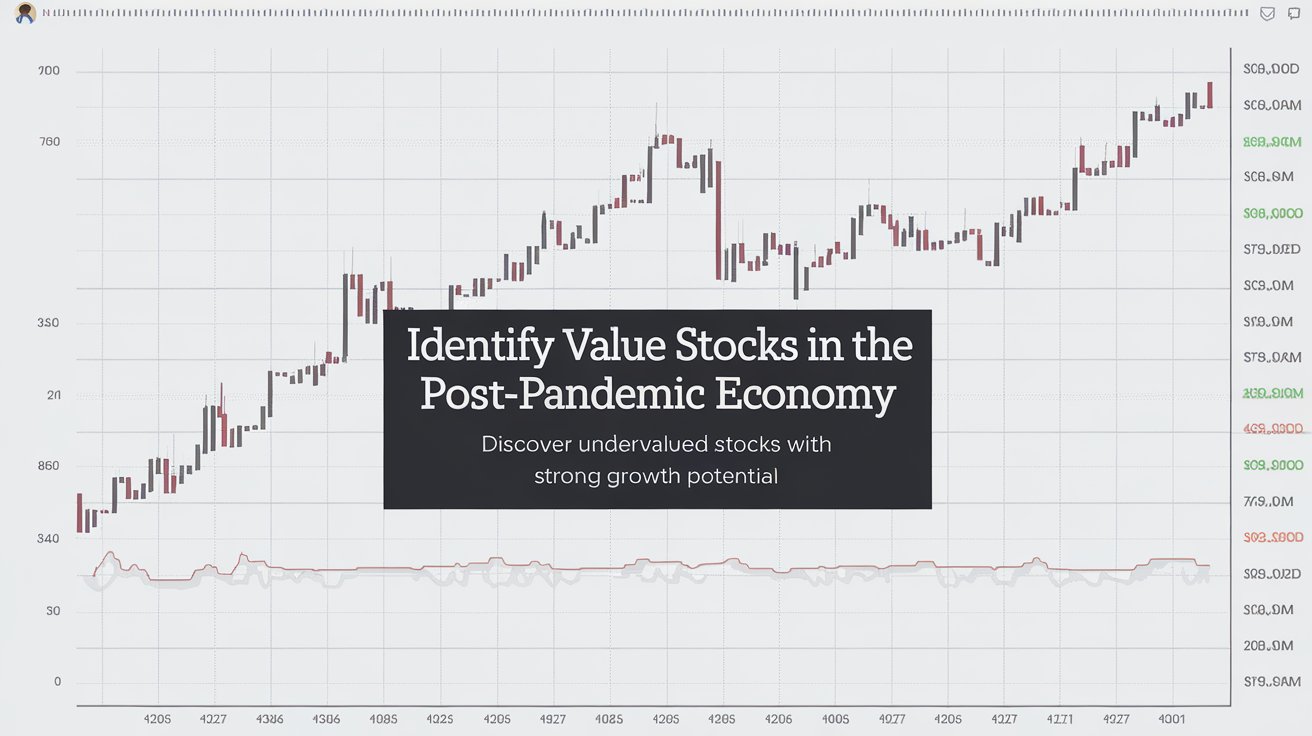As the world continues to navigate the economic landscape shaped by the aftermath of the COVID-19 pandemic, investors are constantly seeking opportunities to maximize their returns. Value investing, a strategy that focuses on identifying undervalued stocks with strong fundamentals, has gained renewed interest in the post-pandemic era. This article will guide you through the process of identifying value stocks in the evolving economic environment of 2024.
Understanding Value Stocks in the Current Context
Definition of Value Stocks
Value stocks are shares of companies that are trading at a price lower than their intrinsic value. These companies typically have strong fundamentals, such as consistent earnings, solid balance sheets, and stable cash flows, but are currently undervalued by the market.
The Post-Pandemic Economic Landscape
The global economy in 2024 continues to be influenced by the long-term effects of the pandemic. Some key characteristics include:
- Accelerated digital transformation
- Shifts in consumer behavior
- Supply chain restructuring
- Emphasis on sustainability and ESG factors
- Ongoing inflationary pressures
Key Metrics for Identifying Value Stocks
1. Price-to-Earnings (P/E) Ratio
The P/E ratio remains a fundamental metric for value investors. In the post-pandemic economy, consider the following:
- Compare P/E ratios to industry averages and historical norms
- Account for temporary earnings distortions caused by the pandemic
- Look for companies with P/E ratios below the market average but with strong growth potential
2. Price-to-Book (P/B) Ratio
The P/B ratio is particularly useful in sectors with significant tangible assets. In 2024:
- Seek companies with P/B ratios below 1, indicating they’re trading below their book value
- Consider the quality of assets and potential for write-downs
- Evaluate intangible assets, which have become increasingly important in the digital economy
3. Dividend Yield
Dividend-paying stocks can offer stability and income in uncertain times:
- Look for companies with consistent dividend payments and growth
- Ensure the dividend payout ratio is sustainable
- Consider the impact of inflation on real dividend yields
4. Free Cash Flow Yield
Free cash flow has become crucial in assessing a company’s financial health:
- Prioritize companies with strong and consistent free cash flow
- Compare free cash flow yield to bond yields for a relative value perspective
- Assess the company’s ability to maintain cash flow in various economic scenarios
5. Debt-to-Equity Ratio
In the post-pandemic era, financial stability is paramount:
- Favor companies with lower debt-to-equity ratios
- Consider industry norms and the company’s ability to service debt
- Evaluate the impact of rising interest rates on the company’s debt burden
Sector-Specific Considerations
Technology
While tech stocks are often associated with growth investing, value opportunities exist:
- Look for established tech companies with strong cash flows and reasonable valuations
- Consider companies benefiting from long-term digital transformation trends
Healthcare
The healthcare sector has been transformed by the pandemic:
- Evaluate companies with strong pipelines and diverse product portfolios
- Consider the impact of healthcare policy changes on different subsectors
Consumer Discretionary
Consumer behavior has shifted significantly:
- Look for companies adapting to e-commerce and omnichannel strategies
- Consider brands with strong customer loyalty and pricing power
Financials
Financial institutions face a complex environment:
- Assess the impact of interest rate changes on profitability
- Consider fintech disruption and banks’ digital transformation efforts
Energy
The energy sector is undergoing a transition:
- Evaluate companies investing in renewable energy and sustainability
- Consider the long-term viability of traditional energy companies
Advanced Strategies for Value Stock Identification
1. Cyclical Adjustment
Some industries are more cyclical than others. In 2024:
- Use cyclically adjusted metrics like the Shiller P/E ratio
- Consider where industries are in their business cycles
2. Sum-of-the-Parts Analysis
For conglomerates or companies with diverse business units:
- Break down the company into its constituent parts
- Value each segment separately to identify hidden value
3. Scenario Analysis
Given ongoing economic uncertainties:
- Model different economic scenarios and their impact on the company
- Look for stocks that offer value across multiple scenarios
4. Quality Factors
Incorporate quality metrics alongside traditional value metrics:
- Assess return on equity (ROE) and return on invested capital (ROIC)
- Look for companies with sustainable competitive advantages
Value Stock Screening Table
Here’s a table summarizing key metrics and thresholds for identifying potential value stocks in 2024:
| Metric | Threshold | Consideration |
|---|---|---|
| P/E Ratio | < Industry Average | Compare to historical and projected growth rates |
| P/B Ratio | < 1.5 | Lower for asset-heavy industries |
| Dividend Yield | > 2% | Ensure sustainability of payout ratio |
| Free Cash Flow Yield | > 5% | Compare to risk-free rate |
| Debt-to-Equity Ratio | < 0.5 | Adjust based on industry norms |
| ROE | > 15% | Consistent over time |
| ROIC | > 10% | Higher than the company’s cost of capital |
Conclusion
Identifying value stocks in the post-pandemic economy of 2024 requires a nuanced approach that combines traditional valuation metrics with an understanding of the evolving economic landscape. By focusing on companies with strong fundamentals, adapting to new market realities, and trading at a discount to their intrinsic value, investors can position themselves for long-term success.
Remember that value investing requires patience and a long-term perspective. The market may take time to recognize the true value of these companies, but history has shown that a disciplined approach to value investing can yield significant returns over time.
As you apply these strategies, always consider your own risk tolerance and investment goals. Diversification remains key, and it’s advisable to consult with a financial advisor to tailor your investment strategy to your individual needs in the dynamic economic environment of 2024 and beyond.

